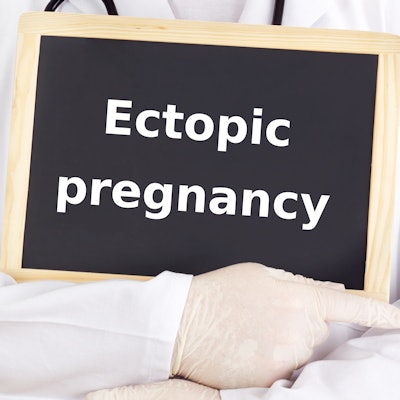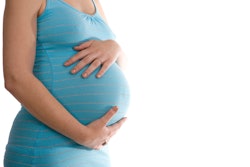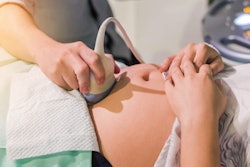
Contrast-enhanced MRI (CE-MRI) can help less experienced radiologists identify implantation sites of ectopic pregnancy, according to a study published in the July issue of Clinical Radiology.
The study findings could help women avoid invasive treatment for ectopic pregnancy, which can negatively affect their fertility, wrote a team led by Dr. Nakao Nishio of Kyoto University in Japan.
"Early and proper diagnosis of ectopic pregnancy is important for a conservative treatment, such as methotrexate or salpingostomy, instead of total salpingectomy, which will preserve fertility for future pregnancies," the group wrote. "In addition, management of ectopic pregnancy is different depending on the implantation site."
Ectopic pregnancy is usually diagnosed by a combination of clinical and transvaginal ultrasound imaging findings. But ultrasound can fail to identify the implantation site of an ectopic pregnancy, which is why MRI can be useful, the researchers noted (Clinical Radiology, July 2020, Volume 75:7, pp. 543-551).
"When transvaginal findings are indeterminate, MRI is increasingly used as a problem-solving tool because of its superior soft-tissue contrast resolution and wide scanning range," they wrote.
CE-MRI is an effective way to diagnose ectopic pregnancy, but adding contrast adds both cost and time. So Nishio and colleagues compared the performance of MRI alone with MRI plus CE-MRI for this application. The study included 63 women with ectopic pregnancy implantation sites confirmed by histopathology.
Two experienced and two less experienced radiologists reviewed regular noncontrast MRI exams and a combination of noncontrast and CE-MRI exams for ectopic pregnancy implantation sites and then indicated their confidence level in their findings.
Transvaginal ultrasound correctly identified 71% of implantation sites, Nishio and colleagues wrote. MRI improved on this percentage: Experienced readers identified implantation sites correctly in 92% of cases for both MRI alone and MRI plus CE-MRI. For inexperienced readers, adding contrast to the MRI exam increased their ability to correctly identify implantation sites from 86% to 92% (although this result was not statistically significant), the group noted.
| Effect of CE-MRI on reader performance for identifying implantation sites of ectopic pregnancies | ||
| Experienced radiologists | Less experienced radiologists | |
| Correct implantation site identifications | ||
| Noncontrast MRI | 92% | 86% |
| Noncontrast MRI + CE-MRI | 92% | 92% |
| Diagnostic confidence | ||
| Noncontrast MRI | 92% | 35% |
| Noncontrast MRI + CE-MRI | 92% | 81% |
The authors also found that CE-MRI visualized dilation of the fallopian tubes more frequently (p = 0.004), and significantly boosted less experienced radiologists' confidence level in determining fallopian tube dilation (p < 0.0001).
Although it's better not to use contrast if MRI is deemed necessary for identifying implantation sites of ectopic pregnancies, for less experienced radiologists it can improve performance -- thus expanding the pool of available readers, Nishio and colleagues concluded.
"Unnecessary contrast medium administration must be avoided; however, it could be used to perform CE-MRI to help readers who are not familiar with gynecological MRI images," they wrote.




.fFmgij6Hin.png?auto=compress%2Cformat&fit=crop&h=100&q=70&w=100)




.fFmgij6Hin.png?auto=compress%2Cformat&fit=crop&h=167&q=70&w=250)











